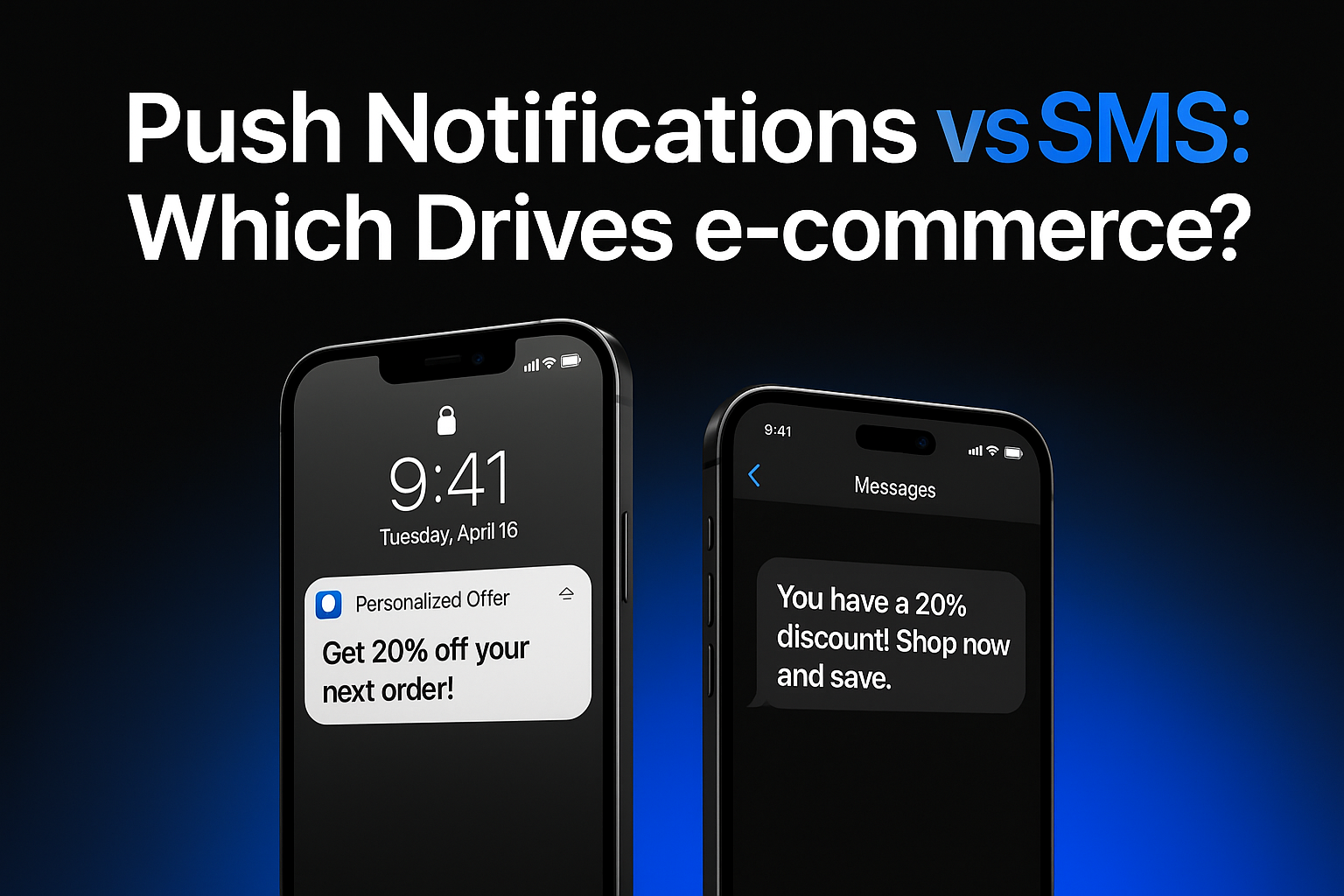Push Notifications vs SMS Marketing: Which Drives Better E-commerce Results?
When building your mobile marketing strategy, two powerful channels often compete for your attention and budget: push notifications and SMS marketing. Both can drive significant engagement and sales, but they operate quite differently and excel in different scenarios. If you're considering adding a mobile app to your marketing strategy, our guide on why mobile-friendly websites aren't enough explains why push notifications are one of the key advantages of mobile apps. For specific implementation tactics, see our article on 6 powerful push notification strategies.

Understanding the Channels
Push Notifications
Push notifications are messages sent directly to a user's mobile device from an application they have installed. They appear on the device's screen regardless of whether the app is in use.
Key characteristics:
- Requires app installation and user opt-in
- Typically includes title, body text, and often an image
- Links directly to a specific section within the app
Primary uses for e-commerce:
- Cart abandonment recovery
- Flash sale alerts
- Back-in-stock notifications
- Order status updates
- Personalized product recommendations
SMS Marketing
SMS marketing involves sending promotional messages directly to customers' phone numbers as text messages.
Key characteristics:
- Only requires a valid phone number (no app needed)
- Text-based messages, typically limited to 160 characters
- May include links to websites or phone numbers to call
Primary uses for e-commerce:
- Time-sensitive promotions
- Important announcements
- Shipping and delivery updates
- Exclusive deals
- Customer service communications
When to Use Each Channel
Push Notifications Excel For:
- Regular engagement that doesn't require immediate action
- App-specific actions
- Personalized recommendations based on in-app behavior
- Rich media campaigns
SMS Marketing Shines For:
- Critical, time-sensitive information
- Reaching users who haven't installed your app
- Major sales or limited-time offers
- Transactional messages
- Two-way communication
Best Practices
Push Notification Best Practices
- Send 2-5 notifications maximum per week
- Personalize content using behavioral data
- Craft clear, action-oriented messages
- Implement deep linking to relevant screens
- Segment your audience for targeted messaging
SMS Marketing Best Practices
- Always obtain explicit permission before sending
- Clearly identify your brand in every message
- Keep messages concise with a single call to action
- Include clear value in every message
- Make opting out simple and straightforward
The Integrated Approach
Rather than choosing one channel over the other, successful e-commerce businesses use both in a coordinated approach:
- Acquisition: Use SMS to reach new customers who haven't installed your app
- Engagement: Use push for regular engagement and SMS for critical messages
- Retention: Use push for loyalty programs and SMS for win-back campaigns
To avoid overwhelming users, implement cross-channel frequency caps and coordinate messaging across both channels.
Conclusion: Choose Both When Possible
Push notifications offer better long-term ROI and conversion rates for engaged app users, while SMS provides superior reach and reliability, especially for critical messages and non-app users.
The most effective strategy combines both channels to create a seamless experience that meets customers where they are with the right message at the right time.
Ready to implement push notifications in your mobile strategy? Learn how to set up effective push notification campaigns with our comprehensive Campaigns Setup Guide. If you're still unsure whether your business is ready for a mobile app, check our article on 7 critical signals that indicate it's time for a mobile app.
